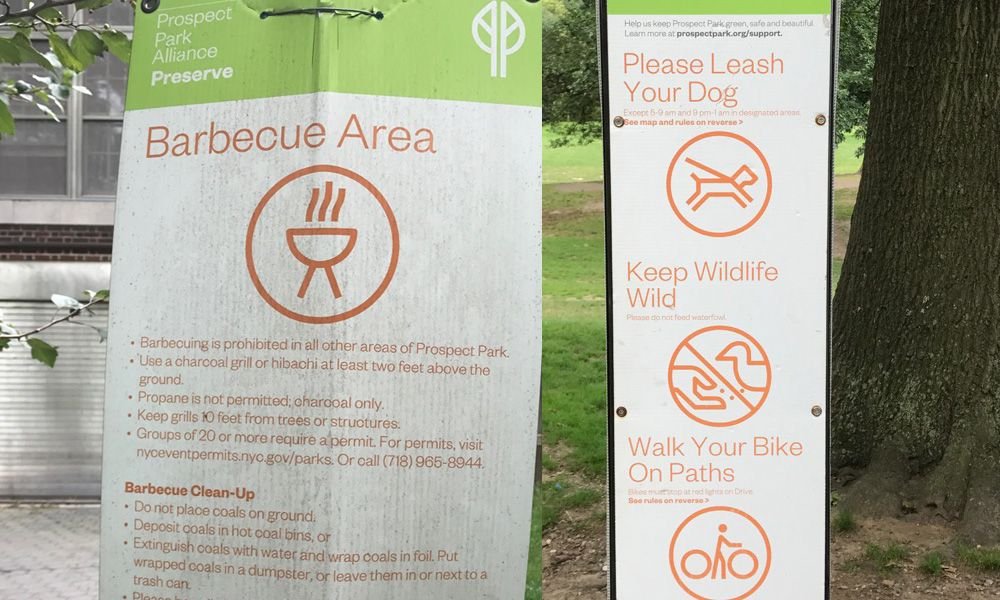
Signaling Betterment
For the last few weeks, I’ve been focusing on signage at Herbert von King Park (HvK). Other than a few official labels that it is indeed a New York City park, there isn’t much of anything in the area that explains the history of the cultural asset, shows visitors where to find what, and offer any kind of guidance of how to properly use the park. Of all the potential routes of development in the park, the conservancy leader and I realized that without an easy and cohesive way to tie the park’s story together, any progress forward would be aimless and jumbled.

Currently this is the only signage at the Park.
So our first mission became clear - a map and signs for HvK.
Sounds easy right? An map here, a sign there, and a few arrows so people know where they’re headed. But the process turned out to be a great deal more difficult and today I’ll be sharing a bit of the strategy of developing signs in and around STEEM Park.
Major (Dirty) Obstacles
When I met the team maintaining Bryant Park, I asked them what they thought was the key factor to their success compared to other parks of the world.
Their answer was immediate - cleanliness.
As long as their public bathrooms smelled respectable and litter wasn’t dragged around, visitors would enjoy the park. No matter what awesome performances were going on or how many kegs were used at the outdoor beer tent, uncleanliness would ruin all the hard work.
What does this have to do with signage? Well it turns out, signs are the most reliable way to upkeep the desirable use of the park. No littering, no smoking, no loitering, etc. are all achieved with explicit but compelling and non-obnoxious markings.

Signages are installed every 5 meters at the Prospect Park, Brooklyn. You constantly have to remind people!
Herbert von King Park, with it’s severe lack of upkeep budget and hired attendees, suffers from lots of litter, lots of dog poop, and lots of improper use of parts of the park. People relieve their pets in areas other than the dog run, kids trample over fenced gardens, and you can tell when a bbq happened on a patch for many days after.
These little communal habits are hard to shake, especially in such a tight-knit and dense community such as Bedford-Stuyvesant. The area is mostly brownstones - beautiful but cramped townhouses split into several apartments. As such, the park becomes like everyone’s collective backyard and less of the city’s property.
Ushering Change with Symbols
Here’s my first go at our park’s symbols.

It is not very different from the ones we have already
.
.
.
Second go,

Hrmm... This seems a bit better!
.
.
.
Not sure what is the best way to say "BBQ at designated areas only"

.
.
And still deciding which one to use for "Pick up after your dog"

.
.
There are obviously better and worse ways of doing clear signage and here’s what I’ve learned. In this go around, the symbols are narrative but not very instructional. They have the related components but no clear instructions. The icons and writing are so small… who got time to read all that? =D
@Mintvilla, an ever-learning landscape architect

